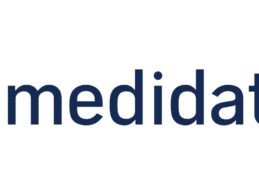In recent years, digital health technologies (DHTs) have significantly changed the way we collect data within clinical trials. This is partially due to the overarching industry shift toward patient-centricity, but in some cases, it is also due to the commercial availability of powerful technology solutions not previously feasible for use in medical devices. In the past, nearly all patient data have traditionally been acquired by purpose-built machines manufactured by relatively small-scale
Read More
Patient Safety | Healthcare Technology | News, Analysis, Insights - HIT Consultant
Our Nursing Home Industry – A National Scandal
A society defines itself by how it cares for its most vulnerable, and especially its seniors. As a Board-Certified Internist and Geriatrician with over 35 years of providing care in nursing facilities, this sentiment has guided me throughout my career. It has led me to found Tapestry Health, a multispecialty medical practice that focuses on providing medical infrastructure in skilled nursing facilities (SNFs), as well as Project Patient Care, a patient advocacy organization based in Chicago,
Read More
TidalHealth to Deploy AI Co-Pilot to Combat Clinician Burnout
What You Should Know:
- TidalHealth, a health system dedicated to community health and patient-centric care, today announced a new partnership with Regard, a company developing an artificial intelligence (AI) co-pilot for physicians to help diagnose medical conditions, and hip.
- Through the implementation of Regard’s software, physicians within the TidalHealth network are able to automate electronic health record (EHR) chart reviews and enhance patient safety by ensuring all diagnoses are
Read More
Leveraging Telemedicine as a Workforce Multiplier for Clinicians
COVID has shown us that telemedicine is effective and easy to use. But why limit the use of virtual care to public health emergencies? With providers and clinicians under increasing strain from staffing gaps and other issues, telemedicine is a valuable solution.
Telemedicine has been a crucial tool in the fight against COVID-19, allowing patients and providers to stay connected even when quarantine rules keep them physically separated.
During the first phase of
Read More
Quality Improvement: Eliminating the Silo Effect in Healthcare Organizations
The healthcare industry has always been under pressure to find ways to provide consistently improving patient satisfaction and outcomes in the face of a rapidly changing medical and regulatory environment. In the wake of the COVID-19 pandemic, the pressure has only accelerated; improvement in patient outcomes now can mean the difference between viability and non-viability for a hospital system.
Collaboration is key to the ability to improve patient outcomes. Without all of the teams
Read More
Medidata Launches New Clinical Operations Technologies
What You Should Know:
- Today, Medidata, a Dassault Systèmes company, is announcing technology enhancements that address key issues in clinical trial management and oversight.
- These enhancements are to Medidata Detect and Rave CTMS (Clinical Trial Management System), which will improve both data oversight and reporting for sponsors and contract research organizations (CROs) in two meaningful ways: how they comprehensively monitor their trial data, and how they
Read More
4 Steps for Operationalizing the FDA’s Call To Improve Health Outcomes for All Patients
In April, FDA Commissioner Dr. Robert Califf laid out areas of challenge and opportunity when it comes to improving health outcomes, restoring public trust in science, and making the most of our ongoing investments in data analytics and clinical research. More specifically, Califf made clear that our current healthcare system is “very well aligned to improve outcomes for some people and not others.”
Califf went on to note that we need better mechanisms for evidence generation
Read More
4 Patient Flow Challenges Contributing to Provider Burnout
There has been frequent reporting about the problem of provider workforce shortages within hospitals and health systems and the related burnout experienced when working in high-stress situations during the COVID-19 pandemic. There are pre-existing and contributing patient flow challenges that have been exacerbated by the pandemic, which can lead to burnout, and therefore are worth discussing.
Exposing the Problem
The extent of provider burnout over the course of the pandemic is well
Read More
How Patient Movement Benefits from Standardized Acuity Scoring
Nurses and providers typically assess patient acuity and volume at the beginning of their shift, whether formally or informally. Managers use patient acuity to balance nursing assignments, and nursing staff uses it to determine which patient care action should be prioritized next. Taking a standardized approach to acuity assessments not only provides more objectivity, but also gives hospitals the data they need to make a variety of tactical and strategic decisions, from daily unit staffing to
Read More
Patient Flow Challenges Contributing to Provider Burnout
There has been frequent reporting about the problem of provider workforce shortages within hospitals and health systems and the related burnout experienced when working in high-stress situations during the Covid-19 pandemic. There are pre-existing and contributing patient flow challenges that have been exacerbated by the pandemic, which can lead to burnout, and therefore are worth discussing.
Exposing the Problem
The extent of provider burnout over the course of the pandemic is well
Read More










